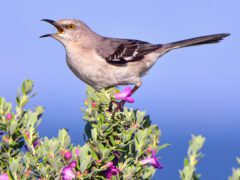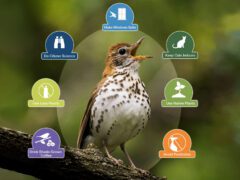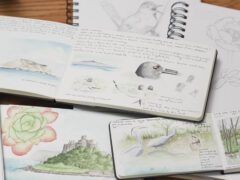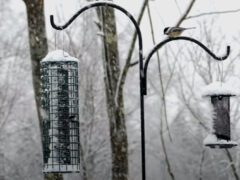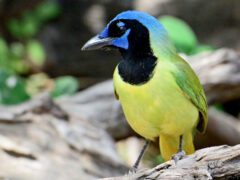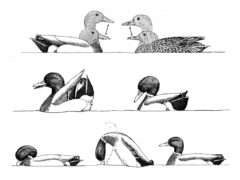The Four Keys to ID
- Size & Shape
Western Tanagers are stocky songbirds; fairly small yet noticeably larger and heavier-bodied than warblers. They have short, thick-based bills and medium-length tails.
Relative Size
Larger than a Yellow Warbler; smaller than an American Robin.

 between sparrow and robin
between sparrow and robinMeasurements
- Both Sexes
- Length: 6.3-7.5 in (16-19 cm)
- Weight: 0.8-1.3 oz (24-36 g)
© John Bjorkman / Macaulay Library
- Color Pattern
Adult male Western Tanagers are yellow birds with black wings and a flaming orange-red head. The wings have two bold wingbars; the upper one yellow and the lower white. The back and tail are black. Adult females have red restricted to the front of the face, with subdued yellow-green plumage on the body. Immatures in fall lack red, while in spring show less red on the head relative to that on adults of their respective sex.
© Nick Saunders / Macaulay Library - Behavior
Western Tanagers forage slowly and methodically along branches and among leaves or needles of trees. They eat primarily insects, supplemented with small fruits in fall and winter. They sometimes catch insects in the air. In spring and summer, males sing their hoarse, American Robin-like song frequently.
- Habitat
Western Tanagers breed in coniferous forests, though they are not particularly choosy about which conifer species. They breed in juniper-pine mixtures at low elevation, up to spruce-fir near treeline. During migration, you may find them in nearly any shrubby or wooded habitats, and even in fairly open country. Their winter habitat in Middle America is generally in pine-oak woodland and forest edge.
© John Drummond / Macaulay Library













